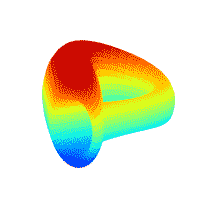
Navigating the Shifting Sands: Understanding $IMT Market Demand
The $IMT (International Mobile Telecommunications) market is a dynamic and ever-evolving landscape, driven by relentless technological advancements and the insatiable global appetite for connectivity. Understanding the intricate forces shaping $IMT demand is crucial for stakeholders across the telecommunications ecosystem, from network operators and equipment manufacturers to application developers and consumers.
The Driving Forces:
Several key factors are fueling the continued growth and transformation of $IMT market demand:
* Explosive Data Consumption: The proliferation of bandwidth-intensive applications like video streaming, online gaming, and augmented/virtual reality (AR/VR) is driving an exponential increase in data consumption. This necessitates robust $IMT networks capable of handling the surging traffic.
* The 5G Revolution and Beyond: The rollout of 5G networks, with its promise of ultra-low latency, high bandwidth, and massive connectivity, is fundamentally reshaping the $IMT landscape. As 5G matures and 6G research accelerates, the demand for advanced $IMT technologies will only intensify.
* Internet of Things (IoT) Expansion: The rapid expansion of IoT devices and applications, spanning smart homes, industrial automation, and connected vehicles, is creating a massive demand for reliable and ubiquitous $IMT connectivity.
* Emerging Markets Growth: Developing economies are experiencing rapid growth in mobile penetration and data usage, creating significant opportunities for $IMT market expansion. These markets often represent the most significant areas of future growth in $IMT.
* Digital Transformation: Businesses across all sectors are undergoing digital transformations, relying on $IMT networks to support remote work, cloud computing, and other digital services. This trend is further amplified by global events that accelerate the adoption of digital tools.
* Mobile Video Consumption: The increase in mobile video consumption, especially short form content, is a significant driver of data demand. This trend causes $IMT networks to be under more strain than ever before.
Challenges and Considerations:
While the $IMT market holds immense potential, it also faces several challenges:
* Spectrum Availability: Securing sufficient spectrum is critical for deploying and expanding $IMT networks. The increasing demand for spectrum is driving up auction prices and creating competition among operators.
* Infrastructure Investment: Building and maintaining robust $IMT infrastructure, particularly 5G and beyond, requires significant capital investment.
* Affordability and Accessibility: Ensuring affordable access to $IMT services for all segments of the population is essential for bridging the digital divide.
* Security and Privacy: As $IMT networks become more pervasive, ensuring the security and privacy of user data is paramount.
* Sustainability: The environmental impact of $IMT networks, including energy consumption and electronic waste, is a growing concern.
The Future of $IMT:
The future of the $IMT market is bright, driven by relentless innovation and the increasing reliance on mobile connectivity. As technologies like 5G, 6G, and artificial intelligence converge, $IMT networks will play an even more critical role in shaping the digital economy. Stakeholders must remain agile and adaptable to navigate the shifting sands of $IMT market demand and capitalize on the opportunities that lie ahead. The $IMT market will continue to grow and transform the way people live and work.
# __The Impact of Virtual Reality on Education: Enhancing the Learning Experience__
Virtual reality (VR) is transforming the education sector, offering an immersive and interactive learning experience that enhances student engagement, retention, and understanding. In this article, we'll explore the impact of VR on education, highlighting its benefits, applications, challenges, and future directions.
# Benefits of Virtual Reality in Education
VR offers numerous benefits in education, including:
1. *Enhanced Engagement*: VR experiences are interactive and immersive, increasing student engagement and motivation.
2. *Improved Retention*: VR helps students retain information better, as they are more likely to remember experiences than traditional teaching methods.
3. *Increased Understanding*: VR enables students to visualize complex concepts, improving their understanding and comprehension.
4. *Personalized Learning*: VR can be tailored to individual learning styles, abilities, and needs, providing a personalized learning experience.
# Applications of Virtual Reality in Education
VR has various applications in education, including:
1. *Science, Technology, Engineering, and Mathematics (STEM)*: VR can enhance STEM education by providing interactive, 3D models and simulations.
2. *Language Learning*: VR can immerse language learners in virtual environments, enhancing their listening, speaking, reading, and writing skills.
3. *History and Cultural Studies*: VR can transport students to historical events, cultural sites, and museums, providing a unique perspective on the past.
4. *Medical and Healthcare Education*: VR can simulate real-world medical scenarios, allowing students to practice and develop their clinical skills.
# Challenges Facing Virtual Reality in Education
While VR offers numerous benefits in education, there are also challenges to overcome, including:
1. *Cost and Accessibility*: VR equipment and software can be expensive, limiting accessibility for some schools and students.
2. *Technical Issues*: VR experiences can be affected by technical issues, such as lag, glitches, and hardware malfunctions.
3. *Content Creation*: Creating high-quality, educational VR content can be time-consuming and require significant resources.
4. *Teacher Training*: Teachers may require training to effectively integrate VR into their teaching practices.
# Future Directions for Virtual Reality in Education
The future of VR in education holds much promise, with potential developments in:
1. *Advancements in Hardware and Software*: Improvements in VR hardware and software will enhance the overall VR experience, making it more accessible and affordable.
2. *Increased Content Availability*: The development of more educational VR content will provide teachers with a wider range of resources to support their teaching practices.
3. *Integration with Other Technologies*: VR will be integrated with other technologies, such as artificial intelligence, augmented reality, and the Internet of Things, to create more immersive and interactive learning experiences.
4. *Personalized and Adaptive Learning*: VR will be used to create personalized and adaptive learning experiences, tailored to individual students' needs, abilities, and learning styles.
# Conclusion
Virtual reality is transforming the education sector, offering an immersive and interactive learning experience that enhances student engagement, retention, and understanding. While there are challenges to overcome, the benefits of VR in education make it an exciting and promising field of study.
# Recommendations
1. *Invest in Virtual Reality Infrastructure*: Invest in VR equipment and software to support the integration of VR into educational institutions.
2. *Develop High-Quality Educational Content*: Develop high-quality, educational VR content that aligns with curriculum standards and supports teaching practices.
3. *Provide Teacher Training and Support*: Provide teachers with training and support to effectively integrate VR into their teaching practices.
4. *Conduct Research and Evaluation*: Conduct research and evaluation to assess the effectiveness of VR in education and identify areas for improvement.
5. *Foster Collaboration and Knowledge Sharing*: Foster collaboration and knowledge sharing among educators, researchers, and industry experts to advance the use of VR in education.
# __Revolutionizing Education: The Future of Virtual and Augmented Reality in the Classroom__
The education sector is on the cusp of a revolution, driven by the increasing adoption of virtual and augmented reality (VR/AR) technologies. VR/AR is transforming the way we learn, making education more immersive, interactive, and effective. In this article, we'll explore the future of VR/AR in education, highlighting its benefits, challenges, and potential applications.
# Benefits of Virtual and Augmented Reality in Education
VR/AR offers several benefits, including:
1. *Improved Engagement*: VR/AR increases student engagement, motivation, and participation, leading to better learning outcomes.
2. *Enhanced Retention*: VR/AR improves knowledge retention, as students are more likely to remember experiences that are interactive and immersive.
3. *Personalized Learning*: VR/AR enables personalized learning, tailoring educational content to individual students' needs, abilities, and learning styles.
4. *Increased Accessibility*: VR/AR increases accessibility, enabling students with disabilities or limitations to participate in educational experiences that may be difficult or impossible for them to access otherwise.
5. *Cost-Effective*: VR/AR is cost-effective, reducing the need for physical equipment, travel, and other resources.
# Challenges of Virtual and Augmented Reality in Education
VR/AR also faces several challenges, including:
1. *Technical Issues*: VR/AR requires reliable technology, including high-performance computers, specialized hardware, and stable internet connections.
2. *Content Creation*: VR/AR requires high-quality, educational content, which can be time-consuming and expensive to create.
3. *Teacher Training*: VR/AR requires teacher training, enabling educators to effectively integrate VR/AR into their curriculum and teaching practices.
4. *Equity and Access*: VR/AR raises concerns about equity and access, as not all students have equal access to VR/AR technology and resources.
5. *Assessment and Evaluation*: VR/AR requires new approaches to assessment and evaluation, measuring student learning in immersive environments.
# Applications of Virtual and Augmented Reality in Education
VR/AR is being applied in various ways, including:
1. *K-12 Education*: VR/AR is being used in K-12 education, enhancing student engagement, motivation, and participation in subjects such as math, science, and language arts.
2. *Higher Education*: VR/AR is being used in higher education, enabling students to explore complex concepts, simulate real-world scenarios, and develop practical skills.
3. *Vocational Training*: VR/AR is being used in vocational training, providing students with hands-on experience and training in fields such as healthcare, manufacturing, and construction.
4. *Special Education*: VR/AR is being used in special education, providing students with disabilities or limitations with personalized learning experiences and accommodations.
5. *Corporate Training*: VR/AR is being used in corporate training, enabling employees to develop new skills, practice complex scenarios, and improve their performance.
# Conclusion
The future of education is virtual and augmented reality, offering a more immersive, interactive, and effective way of learning. While VR/AR faces several challenges, including technical issues, content creation, and teacher training, the benefits of VR/AR, including improved engagement, enhanced retention, and personalized learning, make it an attractive option for many educational institutions and organizations.
# Recommendations
1. *Invest in Virtual and Augmented Reality Infrastructure*: Invest in VR/AR infrastructure, including high-performance computers, specialized hardware, and stable internet connections.
2. *Develop High-Quality Educational Content*: Develop high-quality, educational VR/AR content, tailored to specific subjects, age groups, and learning objectives.
3. *Provide Teacher Training and Support*: Provide teacher training and support, enabling educators to effectively integrate VR/AR into their curriculum and teaching practices.
4. *Address Equity and Access Concerns*: Address equity and access concerns, ensuring that all students have equal access to VR/AR technology and resources.
5. *Develop New Approaches to Assessment and Evaluation*: Develop new approaches to assessment and evaluation, measuring student learning in immersive environments.

AshuBajwaB60
2025/03/27 14:37
# __Revolutionizing Education: The Future of Virtual and Augmented Reality__
The education sector is on the cusp of a revolution, driven by the increasing adoption of virtual and augmented reality (VR/AR) technologies. VR/AR is transforming the way we learn, making education more immersive, interactive, and effective. In this article, we'll explore the future of VR/AR in education, highlighting its benefits, challenges, and potential applications.
# Benefits of Virtual and Augmented Reality in Education
VR/AR offers several benefits, including:
1. *Improved Engagement*: VR/AR increases student engagement, motivation, and participation, leading to better learning outcomes.
2. *Enhanced Retention*: VR/AR improves knowledge retention, as students are more likely to remember experiences that are interactive and immersive.
3. *Personalized Learning*: VR/AR enables personalized learning, tailoring educational content to individual students' needs, abilities, and learning styles.
4. *Increased Accessibility*: VR/AR increases accessibility, enabling students with disabilities or limitations to participate in educational experiences that may be difficult or impossible for them to access otherwise.
5. *Cost-Effective*: VR/AR is cost-effective, reducing the need for physical equipment, travel, and other resources.
# Challenges of Virtual and Augmented Reality in Education
VR/AR also faces several challenges, including:
1. *Technical Issues*: VR/AR requires reliable technology, including high-performance computers, specialized hardware, and stable internet connections.
2. *Content Creation*: VR/AR requires high-quality, educational content, which can be time-consuming and expensive to create.
3. *Teacher Training*: VR/AR requires teacher training, enabling educators to effectively integrate VR/AR into their curriculum and teaching practices.
4. *Equity and Access*: VR/AR raises concerns about equity and access, as not all students have equal access to VR/AR technology and resources.
5. *Assessment and Evaluation*: VR/AR requires new approaches to assessment and evaluation, as traditional methods may not be effective in measuring student learning in immersive environments.
# Applications of Virtual and Augmented Reality in Education
VR/AR is being applied in various ways, including:
1. *K-12 Education*: VR/AR is being used in K-12 education, enhancing student engagement, motivation, and participation in subjects such as math, science, and language arts.
2. *Higher Education*: VR/AR is being used in higher education, enabling students to explore complex concepts, simulate real-world scenarios, and develop practical skills.
3. *Vocational Training*: VR/AR is being used in vocational training, providing students with hands-on experience and training in fields such as healthcare, manufacturing, and construction.
4. *Special Education*: VR/AR is being used in special education, providing students with disabilities or limitations with personalized learning experiences and accommodations.
5. *Corporate Training*: VR/AR is being used in corporate training, enabling employees to develop new skills, practice complex scenarios, and improve their performance.
# Conclusion
The future of education is virtual and augmented reality, offering a more immersive, interactive, and effective way of learning. While VR/AR faces several challenges, including technical issues, content creation, and teacher training, the benefits of VR/AR, including improved engagement, enhanced retention, and personalized learning, make it an attractive option for many educational institutions and organizations.
# Recommendations
1. *Invest in Virtual and Augmented Reality Infrastructure*: Invest in VR/AR infrastructure, including high-performance computers, specialized hardware, and stable internet connections.
2. *Develop High-Quality Educational Content*: Develop high-quality, educational VR/AR content, tailored to specific subjects, age groups, and learning objectives.
3. *Provide Teacher Training and Support*: Provide teacher training and support, enabling educators to effectively integrate VR/AR into their curriculum and teaching practices.
4. *Address Equity and Access Concerns*: Address equity and access concerns, ensuring that all students have equal access to VR/AR technology and resources.
5. *Develop New Approaches to Assessment and Evaluation*: Develop new approaches to assessment and evaluation, measuring student learning in immersive environments and providing feedback that informs instruction.


 Preço mais baixo
Preço mais baixo Preço mais alto
Preço mais alto 













































Dados sociais de Victoria VR
Nas últimas 24 horas, a pontuação do sentimento dos usuários de redes sociais para o token Victoria VR foi 3, e o sentimento nas redes sociais em relação à tendência de preço do token Victoria VR foi Em alta. A pontuação geral do token Victoria VR nas redes sociais foi de 0. Sua posição no ranking de criptomoedas é 602.
De acordo com a LunarCrush, nas últimas 24 horas, as criptomoedas foram mencionadas nas redes sociais um total de 1,058,120 vezes. O token Victoria VR foi mencionado com uma frequência de 0%, classificando-se em 454 no ranking de criptomoedas.
Nas últimas 24 horas, 42 usuários únicos mencionaram o token Victoria VR. O total de menções ao token Victoria VR foi de 22. No entanto, em comparação com o período de 24 horas anterior, o número de usuários únicos diminuir 19%, e o número total de menções aumentar 29%.
No Twitter, houve um total de 0 tweets mencionando Victoria VR nas últimas 24 horas. Entre eles, 0% estão otimistas em relação ao token Victoria VR, 0% estão pessimistas em relação ao token Victoria VR e 100% estão neutros em relação ao token Victoria VR.
No Reddit, houve 1 postagens mencionando Victoria VR nas últimas 24 horas. Em comparação com o período de 24 horas anterior, o número de menções diminuir em 0%.
Visão geral das redes sociais
3